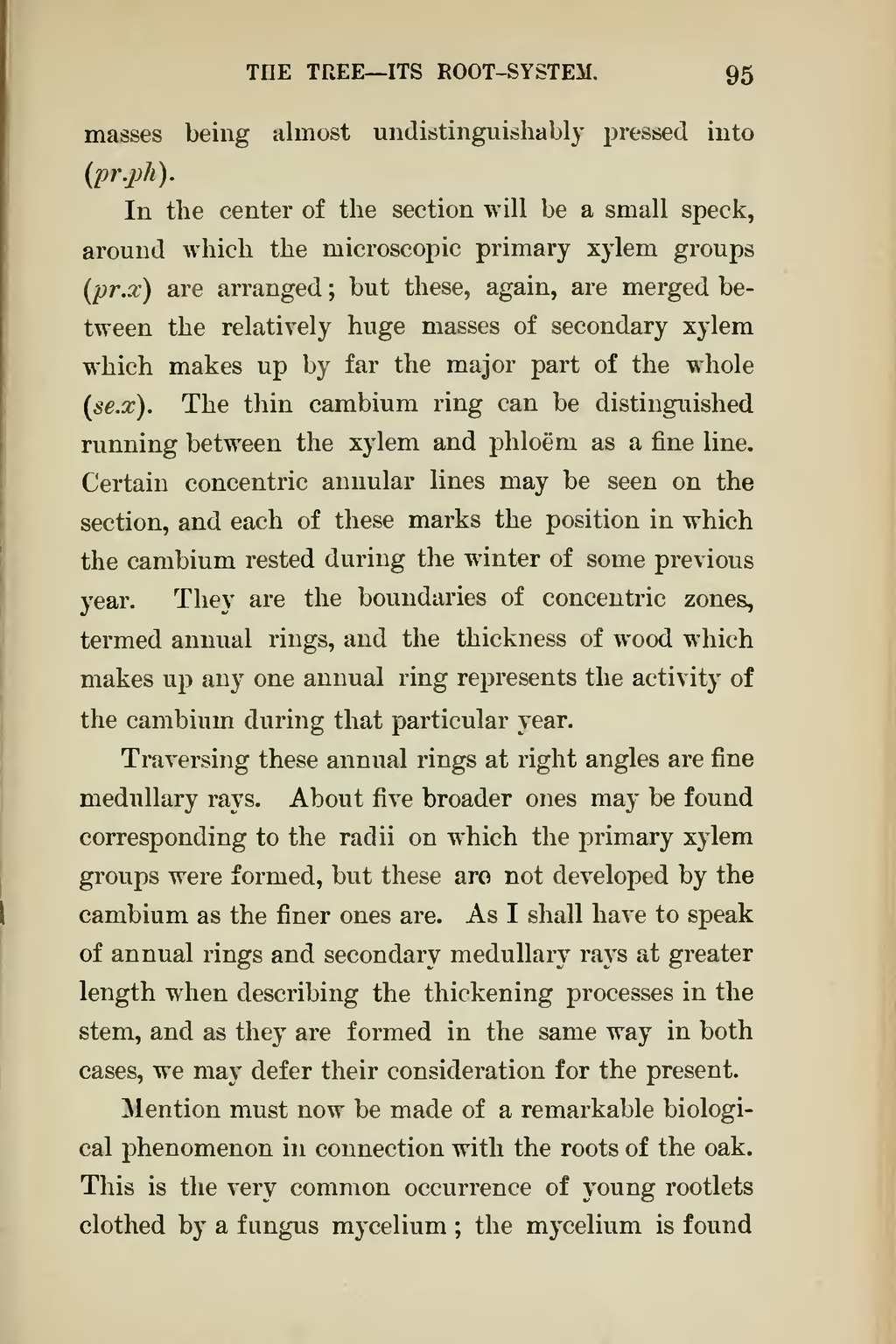masses being almost undistinguishably pressed into (pr.ph).
In the center of the section will be a small speck, around which the microscopic primary xylem groups (pr.x) are arranged; but these, again, are merged between the relatively huge masses of secondary xylem which makes up by far the major part of the whole (se.x). The thin cambium ring can be distinguished running between the xylem and phloëm as a fine line. Certain concentric annular lines may be seen on the section, and each of these marks the position in which the cambium rested during the winter of some previous year. They are the boundaries of concentric zones, termed annual rings, and the thickness of wood which makes up any one annual ring represents the activity of the cambium during that particular year.
Traversing these annual rings at right angles are fine medullary rays. About five broader ones may be found corresponding to the radii on which the primary xylem groups were formed, but these are not developed by the cambium as the finer ones are. As I shall have to speak of annual rings and secondary medullary rays at greater length when describing the thickening processes in the stem, and as they are formed in the same way in both cases, we may defer their consideration for the present.
Mention must now be made of a remarkable biological phenomenon in connection with the roots of the oak. This is the very common occurrence of young rootlets clothed by a fungus mycelium; the mycelium is found
